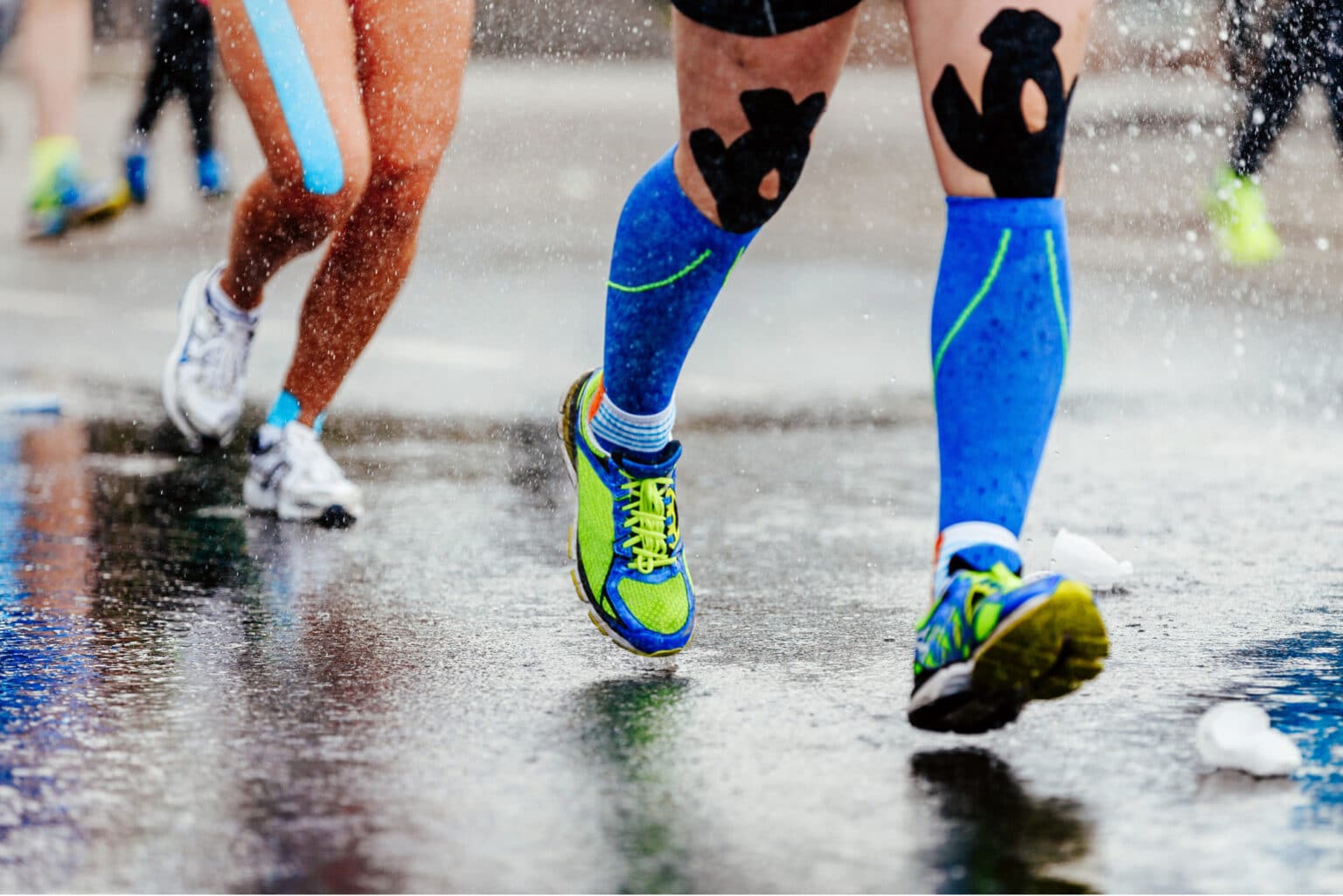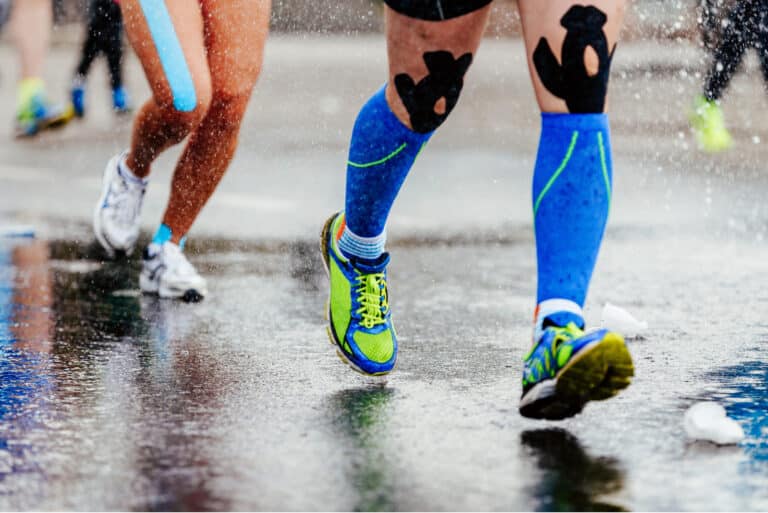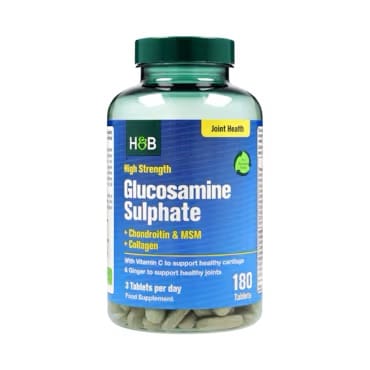


As a runner, you may have experienced that strange, popping or cracking noise coming from your knee joint. Known as crepitus, this unsettling sound can be a cause for concern, especially if it’s accompanied by discomfort or pain. In this article, we’ll take a closer look at crepitus and discuss its causes, when to worry about it, how to manage it, and which supplements and strength training exercises may help.

To understand the impact of crepitus on the knee, let us delve into the intricate structure of this vital joint. The knee, being the largest joint in the body, consists of various components working harmoniously to provide both stability and mobility. It comprises bones, cartilage, ligaments, tendons, and other tissues, all playing crucial roles in its functionality.
During activities like running, the knee joint is subjected to repetitive stress, which can sometimes result in discomfort and the production of knee noise. Three bones form the knee joint: the femur (thighbone), the tibia (shinbone), and the patella (kneecap). The patella rests in a groove of the femur known as the trochlea. As the knee is flexed or extended, the patella moves within this groove.
Soft tissue, including the meniscus, provides padding and protection between the thighbone and the shinbone. The menisci, two wedge-shaped or C-shaped pieces of cartilage, facilitate smooth gliding between the bones. This tough and rubbery cartilage acts as a cushion, maintaining joint stability.
Furthermore, a thin layer of tissue called the synovial membrane covers the joints and secretes synovial fluid, which aids in lubricating the cartilage. The undersurface of the kneecap possesses a cartilage lining that interacts with the femur in the trochlear area. Abnormal wear of this cartilage can lead to grinding sensations and crepitus.
Functionally, the knee operates like a large hinge, connecting the femur to the tibia, while also accommodating the fibula, another bone in the lower leg. The patella, a small and convex bone, safeguards the front of the knee joint.
Overall, understanding the intricate anatomy of the knee joint allows us to appreciate its complexity and the significance of each component in maintaining its optimal function.
Crepitus is a term used to describe the grinding, creaking, or crackling noise that can be heard when moving a joint. It can occur in any joint in the body, including the knee joint. For runners, it’s most commonly felt and heard around the kneecap or patella. This noise can be audible, palpable, or both.
The sound of crepitus varies from person to person. Some may experience a loud and obvious noise, while others may only feel a slight sensation. It can also occur intermittently or continuously during movement.
There are many potential causes for crepitus, which can include:
Over time, the cartilage in your knee joint may wear and thin, causing it to produce noise as you move. This is commonly seen in older individuals or those who have a history of knee injuries.
The synovial fluid in your knee joint contains gas bubbles, which can occasionally produce audible popping sounds. Over time, gas may accumulate in the surrounding areas of the joint, forming minuscule bubbles within the synovial fluid. When you flex your knee, some of these bubbles burst. This occurrence is normal and experienced by everyone on occasion. It is not associated with any pain.
The ligaments and tendons surrounding the knee joint may experience some stretching as they glide over a small bony protrusion. This can result in a clicking sound when they return to their original position. Alternatively, if the ligaments or tendons are tight, they may produce a cracking sound while sliding over the bone. This can occur to facilitate the joint’s movement.
Improper alignment of the knee joint may lead to noise due to the increased pressure on certain parts of the knee. For instance, if your patella is slightly out of position and rubs against the femur’s outer edge, it can result in grinding or popping sounds.
Each individual’s body is unique, with slight variations in the composition of the knee’s tissues and components. These differences can arise from birth, age, injury, or life events. For instance, your knees may exhibit greater flexion compared to someone else, or your kneecaps may move with more freedom. These variations can result in differences in the sound produced by different individuals’ knees. Improper alignment of the kneecap within the trochlea, for example, can lead to grinding sensations and crepitus during movement.
Knee injuries, such as meniscal tears or damage to the anterior cruciate ligament (ACL), can result in crepitus. Trauma, such as a fall on the knee, can also cause damage to the kneecap or other parts of the knee joint, leading to crepitus as well. Crepitus serves as an indicator of this type of damage.
Inflammatory conditions like osteoarthritis or rheumatoid arthritis can result in the deterioration of cartilage, leading to crepitus. Although osteoarthritis can occur at any age, it typically manifests in individuals in their fifties. Referred to as “wear and tear” arthritis, osteoarthritis commonly affects the joints that are frequently used and bear weight, such as the knees. Over time, a combination of mechanical stress and biochemical changes causes the gradual breakdown of the joint’s cushioning cartilage. This process triggers inflammation, pain, and audible crackling or crunching sounds.
Experiencing crepitus accompanied by pain may indicate the presence of osteoarthritis.
After undergoing knee surgery, some individuals may experience crepitus, characterised by the presence of noise in the knees as the surrounding tissues and structures adapt and heal. It is not uncommon for knees to become more audibly noticeable post-surgery. This could be attributed to minor changes that occur during the procedure or, in the case of joint replacement, the characteristics of the new joint.
However, it is worth noting that these sounds may have already been present before the surgery, but individuals tend to be more attentive during the post-operative period, leading to heightened awareness. Although this may cause concern, research has concluded that the presence of crepitus after a knee replacement does not significantly impact long-term prognosis or quality of life.
In most cases, crepitus is harmless and not a cause for concern. It can be quite common in active individuals due to repetitive stress on the knees. However, if the noise is accompanied by pain, swelling, or other symptoms, it’s essential to consult a doctor for proper diagnosis and treatment.
If you have recently experienced an injury or notice that the noise is getting louder and more frequent, it’s also best to seek medical attention. In some cases, crepitus may indicate underlying conditions that require prompt treatment.
While unsettling, some knee noise may be normal and harmless, especially if it occurs without pain. However, if your knee noise is accompanied by pain, swelling, limited range of motion, instability, or a sudden increase in severity, it’s essential to see a healthcare professional.
Crepitus is usually harmless and generally does not necessitate treatment. However, if your crepitus is causing discomfort, it is vital to identify the root cause and address it accordingly. If you experience pain or other symptoms in conjunction with a cracking knee, it may be necessary to seek medical advice. The suitable treatment will depend on the underlying cause.
Potential treatments may include:
In some instances, surgical intervention or joint replacement may be required. It is important to seek guidance from a healthcare professional for personalised advice and guidance.
Even if Crepitus isn’t causing pain, it’s essential to take steps to manage it and maintain knee health, such as:
Wearing the appropriate footwear and maintaining good posture can help with proper alignment of the knee joint, reducing stress on the knees. Regular gait analysis can also identify any misalignments or imbalances that may contribute to crepitus and allow for proper adjustments.
Having stronger muscles around the knee acts as an additional cushion, absorbing shock and reducing stress on the joint. Targeted exercises for the quadriceps, hamstrings, calf muscles, and glutes can enhance knee stability and help prevent crepitus. You can strengthen the muscles around your knee by following the exercises mentioned in Mike Gratton’s strength training article on our website.
Engaging in regular stretching exercises can help maintain joint flexibility and reduce stiffness, which may contribute to crepitus. Stretching also helps improve range of motion and reduce the risk of injury.
Excess weight can put additional stress on the knees, leading to increased wear and tear. Maintaining a healthy weight through proper diet and exercise can help alleviate stress on joints, reducing the risk of developing crepitus.
Individuals who regularly engage in high-impact activities like running or jumping should take appropriate precautions to protect their knees. This can include wearing knee braces or using proper form and techniques while participating in these activities.
When lifting weights, it is beneficial to concentrate on either the quadriceps or hamstring muscle groups. Utilise lighter weights and perform a higher number of repetitions. We recommend that you visit the Pilates for Runners website, where you can explore a diverse range of stretches specifically targeting these areas. By incorporating these exercises into your routine, you will enhance your strength and reduce the likelihood of sustaining injuries.
When exercising, people should always listen to their bodies. If there is pain, they should stop. Always exercise in moderation and stretch before exercising.
While there is no evidence to suggest that specific vitamins can cure crepitus or prevent it from developing, maintaining a balanced diet rich in essential vitamins and minerals can help support overall joint health. In addition to managing crepitus through lifestyle changes, certain supplements may help, such as:

While crepitus is a common cause of knee noise, other conditions can also cause popping or cracking sounds. These may include:
If you experience any other symptoms in conjunction with your crepitus, such as pain, swelling, or limited mobility, it is essential to seek medical advice for proper diagnosis and treatment. It’s also important to note that individuals may experience more than one cause of knee pain, making it vital to consult with a healthcare professional for a comprehensive treatment plan.
While the sound of knees during running may be concerning, managing crepitus is achievable through exercise, lifestyle adjustments, and supplement support.
Why not check out Pilates for Runners for targeted strength exercises that focus on the glutes, hamstrings, and quads to prevent and manage crepitus.
By adopting the right approach, you can minimise the risk of developing crepitus and maintain healthy knees for years to come. Remember, it’s never too late to prioritise your body’s well-being. Take small steps towards better knee health today and enjoy the benefits in the future.
Join our mailing list to stay up to date with the latest UK running events, training tips, and exclusive offers on running products. Rest assured, we value your privacy and would never dream of selling your address. Sign up now…
Share this article
Completing a marathon is a huge accomplishment. After months of training and hard work, crossing...
Rest days are an essential part of any workout routine. They provide the body with...
Hip injuries in runners are often a result of intrinsic and extrinsic factors that challenge...
By yoga teacher, Anneke West. Running is a popular, easy and a fantastic way to...
Do you ever experience tight or stiff muscles after your runs? Or do you encounter...
Running offers a remarkable opportunity to enhance cardiovascular fitness, boost stamina, and alleviate stress. However,...
We’re here to make sure you’re up-to-date with the latest running tips, events and product discounts – we’ve always got your back! Rest assured, we value your privacy and would never dream of selling your address.
BONUS: Sign up today and receive a FREE code for our Sub-4-Hour Marathon Plan